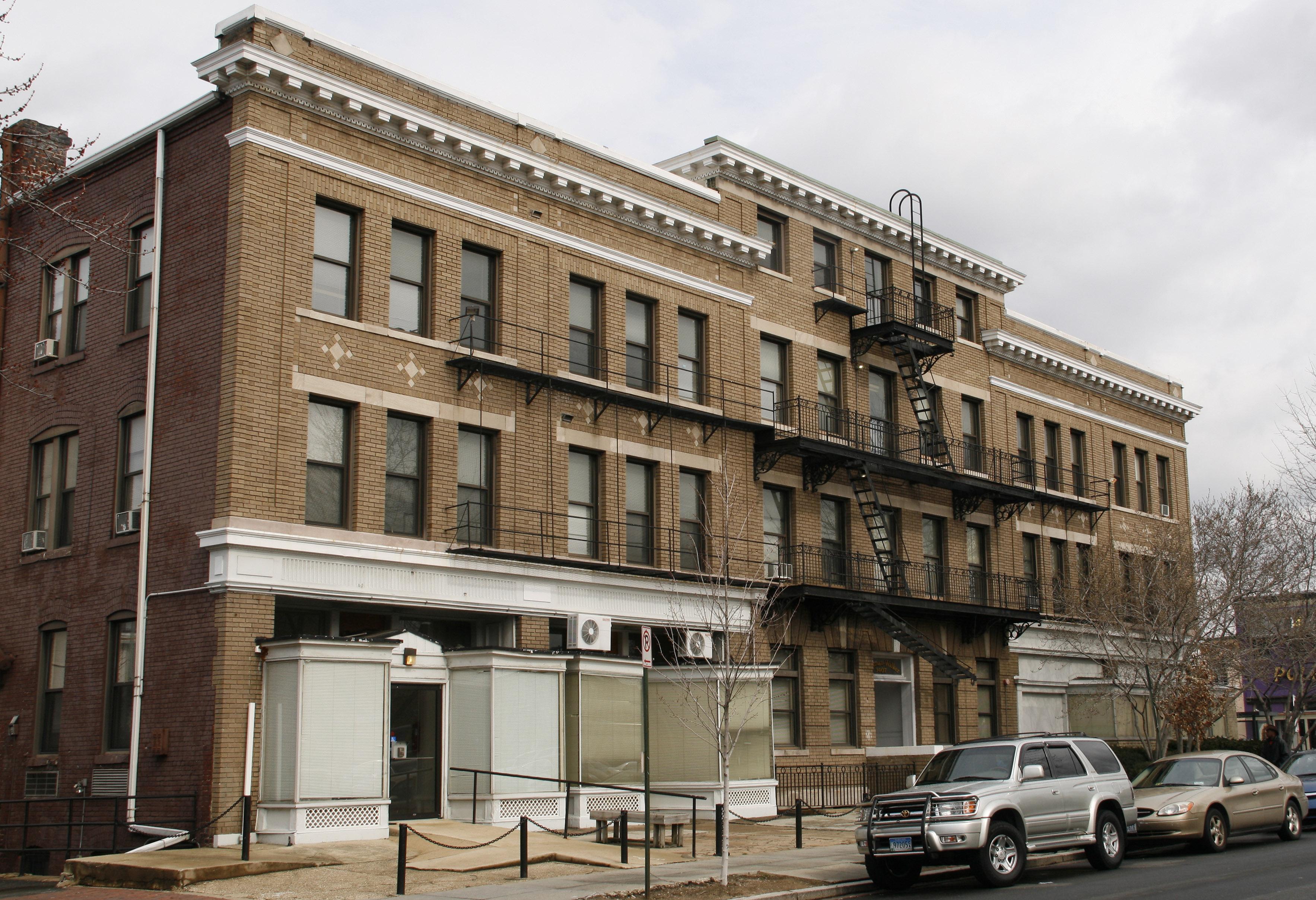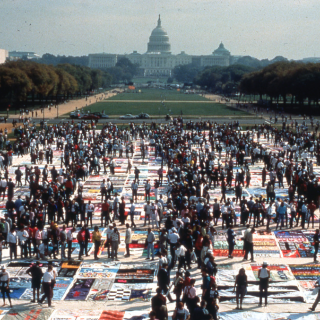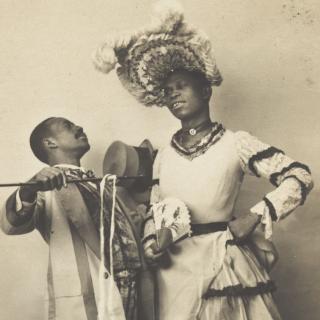A Christmas Benefit at the Height of an Epidemic
In December of 1986, parents were rushing to the stores to snatch a Cabbage Patch Kid, G.I. Joe or Teddy Ruxpin off the shelf before they were all gone. That same month, the generosity of a local benefactor was a touching reminder of what the holiday season is really about. On Dec. 21, 1986, Robert Alfandre welcomed 30 people infected with AIDS into his home in northwest Washington for a Christmas party.[1]
At first glance, this event may not seem like a historic moment. It didn’t make headlines, other than one brief Washington Blade article titled “Sharing the gifts, and the spirit, of the holidays.” Nonetheless, this benefit was a small, but significant local demonstration of support for the community affected by, and often marginalized by AIDS, occurring one year before the AIDS Memorial Quilt was displayed on the National Mall.
Many of the attendees were patients of the Whitman-Walker Clinic, a private nonprofit organization that began as a gay health center in 1973, and grew to become a forerunner in AIDS care and activism.[2] Along with services such as testing, counseling, and public education about how to reduce risk of transmission, the Whitman-Walker Clinic opened the Schwartz houses, which provided a place to live for many unhoused people with AIDS.[3]
As the Washington Post noted in 1987: “The District does not currently have a sufficient number of beds to meet the demands for housing and care of these patients. For persons who have been displaced from their own homes, only the Schwartz Housing Project of the Whitman-Walker Clinic and the Gift of Peace home provide an alternative to expensive institutional care or the streets.”[4]
Locally, the AIDS epidemic was severe. The disease first came to public awareness in 1982, and reached the capital within a year, in April of 1983.[5] By 1987, Washington D.C. had the fifth-highest rate of infection in the U.S.[6] Further, the human immunodeficiency virus disproportionately impacted marginalized groups: as Don Colburn wrote in the Post: “In the District, about 50 percent of the reported cases are in Blacks, 47 percent in Whites and 3 percent in Hispanics. Though most of the AIDS inpatients treated at Howard University Hospital are gay or bisexual men, said Dr. Wayne Greaves, chief of infectious diseases, a majority of the outpatients—people who test positive for the virus but as yet have relatively mild symptoms—are intravenous drug abusers.”[7]
As a sexually-transmitted disease that was first recorded in gay men, the AIDS epidemic has been surrounded by a dark cloud of stigma, misunderstanding and discrimination. In reality, HIV can only spread through contact with infected blood, semen, vaginal fluid, anal mucous and breastmilk.[8] Nonetheless, persistent myths incited fear in the general public. Many Americans questioned whether they could get the virus from hugging, kissing, sharing food or using a toilet seat after a person with AIDS.[9] As a result, HIV-positive people were often barred from basic rights, such as access to dental care and education.
Robert “Bob” Alfandre was the benefactor who hosted the Christmas benefit that December in 1986. Alfandre’s philanthropy for the LGBTQ+ community began as early as the 1970s, and continued until his death in 2014.[10]
In addition to fundraising and advocating for gay rights, Alfandre sponsored one of the eight houses in the Schwartz Housing Project.[11] As a Rainbow History Project article remarked: “During the height of the AIDS crisis, Bob bought a small home on River Road and converted it into a hospice for those who had nowhere else to go. Almost entirely at his own expense, Bob financed the day-to-day operations of the hospice. He named it the Carroll Sledz House, in memory of the partner he lost to the epidemic. The house had eight beds; Bob recalls that during the height of the crisis not one sat vacant: ‘There was always someone to take an empty place.’”[12]
Of course, an “empty place” had a darker subtext, usually indicating that another victim had succumbed to the virus. Since antiretroviral therapy was not available until 1996, there was no effective treatment at that time.[13] Thus, throughout the 1980s, an AIDS diagnosis was a bleak prognosis: patients could be expected to live between three months and three years.[14] By Jan. 1, 1987, AIDS had claimed the lives of 24,559 Americans.[15]
Robert Alfandre’s Christmas party exemplified a rare moment of holiday levity for people infected with AIDS, for people who had lost loved ones to the virus, and for those who worked tirelessly to support the LGBTQ+ community at the height of the epidemic. By sharing his living space and breaking bread with AIDS victims, Alfandre refused to surrender to the fear of contracting the virus—a fear that plagued the American public long after the methods of transmission were proven.
According to the Blade article, after a “lavish buffet dinner,” the D.C. Lesbian and Gay Chorus gave a performance.[16] Additionally, every attendee of the benefit received presents. One guest was “a young woman who carried an oxygen tank for her infant daughter who has AIDS.”[17]
Another attendee, “a blonde man in his twenties” explained that he would wait until Christmas Day to open the gifts he received at the event.
He said: “I’m not going to open them now … These are the only Christmas gifts I’ll get.”[18]
This post is dedicated to the Christmas generosity of Robert Alfandre.
To learn more about the AIDS epidemic, visit these additional sources:
“The Fight Against AIDS” The Eighties (2016), CNN Documentary.
“HIV Historic Timeline,” PEPFAR, U.S. President’s Emergency Plan for AIDS Relief.
“HIV/AIDS: Snapshots of an Epidemic,” amfAR, the Foundation for AIDS Research.
“The state of HIV in Washington: 29 years later,” Ray Martins, Washington Blade.
Footnotes
- ^ Robert Blizzard, “Sharing the gifts, and the spirit, of the holidays.” Washington Blade. DigDC, Jan 2, 1987. http://hdl.handle.net/1961/dcplislandora:10577.
- ^ James Rupert, “D.C. Clinic Draws Praise for Its AIDS Work.” The Washington Post, Nov 20, 1988. https://www.washingtonpost.com/archive/local/1988/11/20/dc-clinic-draws-praise-for-its-aids-work/f839683f-e123-4814-a9ca-19c481db7933/.
- ^ Margaret Engel, "Gay Groups Ask D.C. to Boost Funds for AIDS: Large Increase is Requested in D.C. AIDS Project Budget." The Washington Post (1974-Current File), Oct 08, 1985. https://search-proquest-com.dclibrary.idm.oclc.org/historical-newspapers/gay-groups-ask-d-c-boost-funds-aids/docview/138472598/se-2?accountid=46320.
- ^ "The AIDS Hospice: [FINAL Edition]." The Washington Post (Pre-1997 Fulltext), Aug 29, 1987. https://search-proquest-com.dclibrary.idm.oclc.org/newspapers/aids-hosp….
- ^ Ray Martins, "The state of HIV in Washington: 29 years later." Washington Blade, Jul 19, 2012, https://www.washingtonblade.com/2012/07/19/the-state-of-hiv-in-washingt….
- ^ Colburn, Don. "Cover Story: [FINAL Edition]." The Washington Post (Pre-1997 Fulltext), Jun 02, 1987. https://search-proquest-com.dclibrary.idm.oclc.org/newspapers/cover-story/docview/306907353/se-2?accountid=46320.
- ^ Ibid.
- ^ “HIV Historical Timeline,” PEPFAR, U.S. President’s Emergency Plan for AIDS Relief. https://hivhistory.org/panels/panel-01/.
- ^ “Myths About HIV and AIDS,” Avert: Global information and education on HIV and AIDS, https://www.avert.org/hiv-transmission-prevention/myths.
- ^ “ALFANDRE, ROBERT NELSON,” New York Times. June 20, 2014, https://archive.nytimes.com/query.nytimes.com/gst/fullpage-9F03E7DB1F3AF933A15755C0A9629D8B63.html.
- ^ Doug Hinckle, “Schwartz Celebrates Five Years.” Washington Blade. DigDC, May 18, 1990. http://hdl.handle.net/1961/dcplislandora:47699.
- ^ “Robert Alfandre.” Rainbow History Project Digital Archives. 2012. https://archives.rainbowhistory.org/exhibits/show/pioneers/2012awardees/alfandre.
- ^ Rita Rubin, “The Buddy System.” POZ, Feb 13, 2017, https://www.poz.com/article/buddy-system.
- ^ “What Are HIV and AIDS?” HIV.gov, https://www.hiv.gov/hiv-basics/overview/about-hiv-and-aids/what-are-hiv-and-aids.
- ^ “HIV/AIDS: Snapshots of an Epidemic,” amfAR, https://www.amfar.org/thirty-years-of-hiv/aids-snapshots-of-an-epidemic/.
- ^ Robert Blizzard, “Sharing the gifts.”
- ^ Ibid.
- ^ Ibid.






![Sketch of the mythical fuan by Pearson Scott Foresman. [Source: Wikipedia]](/sites/default/files/styles/crop_320x320/public/2023-10/Goatman_Wikipedia_Faun_2_%28PSF%29.png?h=64a074ff&itok=C9Qh-PE1)












